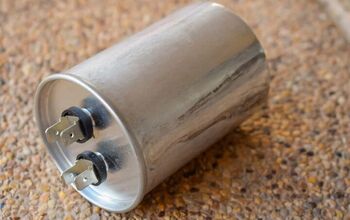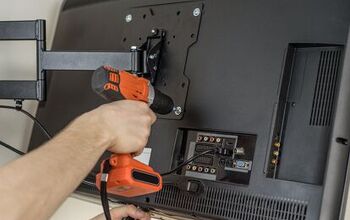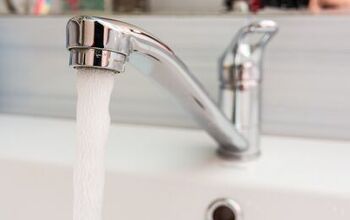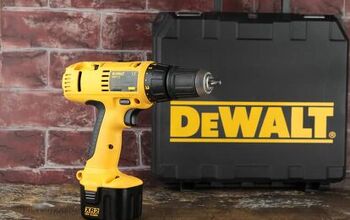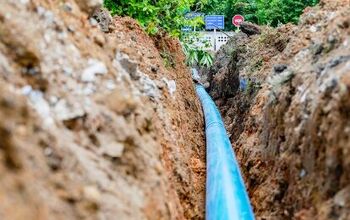Loud Vibrating Noise When Flushing Toilet? (Possible Causes & Fixes)

Is there a strange humming noise coming from in or around your toilet? Does the noise happen when you flush the toilet, or is it a continuous sound happening all the time?
Chances are it’s a problem that can easily be solved; it’s diagnosing the problem that will probably be the most time-consuming.
The most likely cause of toilet vibration is a faulty toilet fill valve. If the valve is unable to create a proper seal inside the tank, the toilet will continuously fill and empty, creating a humming sound. Replacing the fill valve should fix the problem. A loose pipe could also be the problem, and tightening would be the solution here.
Do You Need to Install or Repair a Toilet?
Get free, zero-commitment quotes from pro contractors near you.

What the Fill Valve Does
The toilet fill valve refills the toilet bowl after a flush. This component is in the toilet’s tank. As the tank fills with water, the toilet’s flapper—another component in the tank—slowly sinks until it rests on the float valve, creating a seal and preventing any more water from leaving the tank.
Modern toilet fill valves were invented as a replacement for old plunger-style ballcocks—the earliest kind of fill valve. It’s rare to find these on modern flush toilets, and often these ballcocks were made of brass.
Nowadays, however, anti-siphon plumbing code says that ballcocks should not be used, as they may allow contaminated water back into the fresh water supply because of low water pressure.
The Basic Anatomy of a Valve
A toilet fill valve is connected to the water supply line, and this line is usually located beneath or behind the toilet’s tank. The water supply line also has a shutoff valve, and this valve is there to ensure that water can be cut off in a moment’s notice.
The toilet’s fill valve will also be connected to what’s known as the float. The toilet float is supposed to regulate how much water comes out of the fill valve, and a malfunction in either component can cause the toilet to fill with an inadequate amount of water.
Toilet float valves—as mentioned already—are also known as ballcocks. While these used to be made of metal, toilet floats are now mostly made of plastic or another material. There are also two main style: the float balls and the float cups. Modern float cups are compact, so they fit inside tanks easily.
When You Flush
Before a toilet is flushed, its tank is full of water. Its fill valve is completely closed and the float ball or cup is resting on the surface of the water in the tank.
When flushed, the water in the tank begins to flow to the bowl through the flush valve. The flushing handle activates the lift chain, which slowly settles back into place after releasing the handle.
The toilet float is now at the bottom of the tank, as all the water in the tank was used for the flush. Now the fill valve closes and water is able to fill the tank once again.
The toilet’s float rises as the tank fills. Once the water reaches a predetermined level, the tank will stop filling with water. Now it’s ready for the next flush!
Once again, water enters the bowl via the toilet’s refill tube. This component is also connected to the toilet’s fill valve.
Toilet Fill Valve Problems
Several things can cause a toilet fill valve to malfunction. Some of the common problems are listed below:
- Debris in the water system.
- A worn fill valve seal.
- The “water hammer” effect.
Each of these problems will be briefly explained below. Once you’re familiar with these problems, identifying the cause of vibrations will be a lot easier.
Debris in the Water
Debris can take many forms. Natural mineral buildup in the water is the most common kind of debris, and it can show up and obstruct different parts of the system. Debris can render the valves, supply line, and shut off valve inoperable.
Debris can also inhibit water from flowing freely as it should. If water needs to force its way through, such will create more problems down the road.
If water is being blocked by debris, you may hear a hissing noise coming from your toilet. Clear out any debris that’s in the system. Once it’s gone, the hissing should subside.
If the toilet continues to hiss or scream, even after cleaning, it may be that the fill valve is worn or faulty. If the valve itself is blocked, the toilet may sound as if it’s humming; a scream will result from a solid block.
A Faulty Valve Seal
Toilet fill valves generally last between four and ten years. Of course, a higher quality fill valve is going to last longer.
The part of the fill valve which makes the seal is made of rubber, as rubber is an effective material for this purpose. Over time, however, the rubber can lose its elasticity and harden. When this happens, the fill valve won’t be able to make a good seal, and as a result extra water will leave the tank on each flush.
A broken valve seal can also cause the tank to fill with too much water, causing the overflow tube inside the tank to redirect water to the toilet bowl. If the seal is particularly bad, the toilet will continue to run long after being flushed. A humming or vibrating noise may be audible when the toilet is constantly filling and emptying itself.
The “Water Hammer” Effect
If you’ve ever heard your toilet sound like a striking hammer, you may have a faulty valve somewhere. This noise is often heard when pipe water slams up against a valve that’s closed. In this instance, it’s likely that the valve closed too early and the rushing water was not ready for this.
With no escape route, the water has no choice but to hit the block, creating a ricocheting effect that may be audible throughout your entire house. You should get this problem fixed as soon as possible, as water that repeatedly “hammers” against pipes causes wear and tear. Eventually, the hammer effect may lead to bigger plumbing problems, some of which could’ve been prevented.
However, fixing this can be a hassle. A professional plumber will need to be hired, and the process of fixing a piping issue can be considerably invasive. One can, however, purchase and install a water hammer arrestor. But you should consult with a professional before you purchase one of these.
Addressing the Noise (If It’s the Toilet Fill Valve)
Fortunately, replacing a toilet fill valve isn’t difficult work. You can order one online or pick one up at the local hardware store.
Installing a New Toilet Fill Valve
As was mentioned earlier, the fill valve is part of the toilet’s tank, which means it can be accessed easily. Replacing a fill valve can be done DIY—you just have to follow proper procedure.
Follow these steps to replace your toilet’s fill valve:
- Disconnect the water supply line from the toilet.
- Drain the tank of all water.
- Remove the old fill valve.
- Insert the new fill valve and tighten the locknut.
- Reconnect the water supply line.
- Attach the fill valve to the refill tube inside the tank.
- Adjust the water level by moving the toilet float up and down.
Repairing an Existing Toilet Fill Valve
First, your best bet is buying a new fill valve, as they are both cheap and easy to replace. Should you decide against this, however, repairing the fill valve is also a valid option.
What needs repairing first is probably the valve’s seal, as the seal is often what gets worn down first. To repair the seal, you’ll need a new seal altogether, which is why buying a whole new valve is usually better.
To replace the valve’s seal, here’s what you must do:
- Disconnect the water supply from the toilet.
- Drain the tank of all water by flushing repeatedly.
- Take off the cap that is on the fill valve.
- Turn the valve counterclockwise. The valve seal will be inside the cap.
- Slowly open the shutoff valve. This will clear the valve of debris. Use a cup to block the water.
- Close the valve.
- Replace the old seal with the new valve seal.
- Cap the valve, turn the water back on, and refill the tank.
Do You Need to Install or Repair a Toilet?
Get free, zero-commitment quotes from pro contractors near you.

Related Questions
How long will a toilet fill valve last?
The general consensus is about five years. However, with a quality fill valve, consistent upkeep, and a good water system, the valve could last over ten years. The seal may still need replacing, though the valve itself will be fine.
Should I get a float ball or cup for my toilet?
It’s up to you! Float balls take up far more tank space than float cups, but they work just fine. Float cups are smaller and better for commercial toilets, as these are designed to save water and space. In the end, your goal should be a properly functioning toilet, so get whichever component accomplishes this end.

Matt loves everything DIY. He has been learning and practicing different trades since he was a kid, and he's often the first one called when a friend or family member needs a helping hand at home. Matt loves to work with wood and stone, and landscaping is by far his most favorite pastime.
More by Matthew Mountain



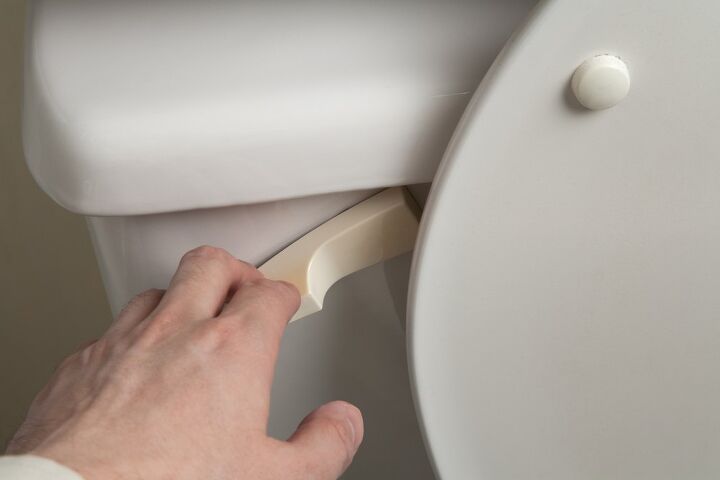







![10 Best Cordless Leaf Blowers – [2022 Reviews & Ultimate Guide]](https://cdn-fastly.upgradedhome.com/media/2023/07/31/9070789/10-best-cordless-leaf-blowers-2022-reviews-ultimate-guide.jpg?size=350x220)






